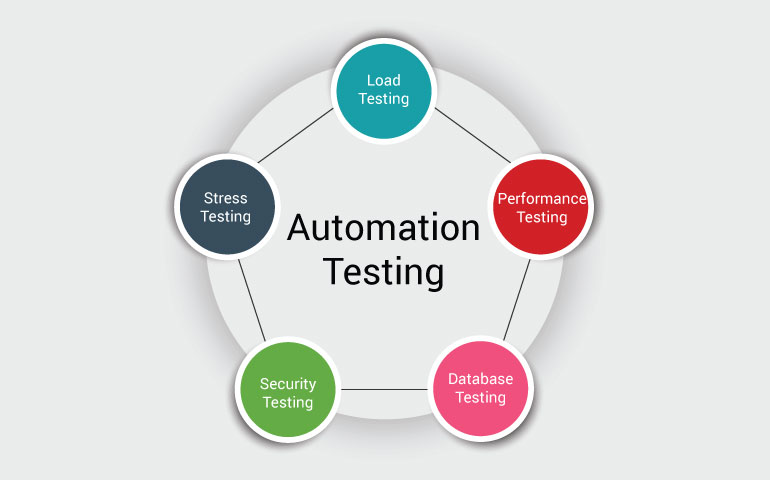Automation Testing Structures: Streamlining Complicated Testing Circumstances
Automation Testing Structures: Streamlining Complicated Testing Circumstances
Blog Article
Making Certain Success in Automation Examining: Trick Metrics, Difficulties, and Solutions Every QA Team Must Know
In the realm of software program quality control, the landscape of automation testing is ever-evolving, requiring a meticulous approach to guarantee seamless operations. Trick metrics act as the compass leading QA teams with the substantial terrain of examination automation, dropping light on development and areas for improvement. Challenges loom big, typically casting shadows on the course to success. By recognizing these difficulties and executing reliable options, QA groups can navigate with complexities with finesse. The journey to mastering automation screening is paved with subtleties that need an eager eye for tracking, analysis, and continual renovation. automation testing. As the market propels ahead, the mission for optimum efficiency in automation testing stays a constant quest, prompting QA teams to outfit themselves with the knowledge and techniques important for accomplishment.
Importance of Key Metrics
Comprehending the relevance of essential metrics is vital for assessing the performance and performance of automation testing processes. Trick metrics work as quantifiable actions that offer important understandings into various aspects of the testing process, such as examination protection, test execution time, defect density, and test situation performance. By examining these metrics, QA groups can recognize traffic jams, inadequacies, and locations for renovation within their automation screening framework.
One critical facet of crucial metrics is their capability to track progression and keep an eye on the total wellness of the testing process (automation testing). They enable stakeholders to make educated decisions based on data-driven insights, which can bring about a lot more efficient testing methods and far better resource appropriation. In addition, key metrics can help teams set realistic goals, gauge the success of automation campaigns, and demonstrate the ROI of automation screening efforts

Usual Obstacles Encountered
Challenges commonly run into in automation testing processes can significantly influence the overall performance and effectiveness of QA groups. Automation testing might not cover all facets of screening, such as use and customer experience screening, which still require hands-on intervention. Getting rid of these challenges needs correct preparation, strategic test situation option, durable upkeep procedures, ample resources, and a clear understanding of the restrictions of automation testing.
Reliable Solutions for Obstacles
To address the obstacles come across in automation screening, carrying out efficient options is important for boosting the effectiveness and productivity of QA groups. One essential service is to purchase robust training programs for QA teams to guarantee they have the necessary abilities to effectively use automation tools. Training can bridge expertise gaps, boost understanding of automation frameworks, and improve scripting capabilities, inevitably causing much more efficient examination creation and implementation.
An additional important service is to develop clear communication networks within the QA group and with other stakeholders, such as designers and job supervisors. Reliable communication assists in straightening assumptions, sharing development updates, and without delay dealing with issues or roadblocks that may arise during the automation screening procedure.

Surveillance and Analysis Methods
Carrying out efficient surveillance and evaluation techniques is crucial for ensuring the success and performance of automation screening processes. By making use of surveillance tools, QA groups can track the performance of test manuscripts, determine bottlenecks, and identify areas for enhancement. Real-time surveillance enables for fast discovery of concerns, making it possible for rapid feedback and resolution. Furthermore, evaluating test outcomes and metrics offers important understandings right into the quality of the software application being tested and the effectiveness of the screening strategy.
One trick strategy in surveillance and analysis is making use of control panels that settle appropriate metrics and KPIs in a visually available style. These dashboards offer a comprehensive click to investigate introduction of examination implementation status, examination insurance coverage, flaw trends, and various other critical details. Regularly reviewing and analyzing these dashboards can help QA groups make notified choices, focus on tasks, and enhance screening efforts.
Moreover, executing automated notifies and notifications based on predefined thresholds can improve aggressive tracking and timely treatment. By setting up signals for performance variances or test failings, groups can address issues quickly and stop them from intensifying. Generally, tracking and analysis techniques play an important duty in guaranteeing the performance and success of automation testing campaigns.
Continual Enhancement Techniques
Enhancing the efficacy of automation screening processes requires the constant refinement of techniques and methodologies. Constant renovation strategies are pivotal Continue for QA teams to adjust to advancing innovations and deliver high-grade software. One key method to improving automation testing processes is to carry out regular testimonials and retrospectives. By evaluating past testing cycles, groups can identify bottlenecks, inadequacies, and locations for enhancement. Implementing feedback loops and including lessons found out right into future screening frameworks can generate substantial renovations gradually.

Verdict
In final thought, it is vital for QA groups to understand the crucial metrics, obstacles, and remedies in automation screening to guarantee success. By very carefully monitoring and examining data, executing reliable services to typical obstacles, and constantly improving approaches, QA groups can maximize their screening processes and provide top notch software program items. Sticking to these methods will ultimately result in a lot more effective and efficient automation testing practices.
By evaluating these metrics, QA teams can recognize bottlenecks, inefficiencies, and locations for enhancement within their automation testing her response structure.
In addition, key metrics can assist teams established reasonable goals, determine the success of automation campaigns, and show the ROI of automation testing initiatives.
Difficulties typically encountered in automation testing procedures can dramatically influence the overall efficiency and performance of QA teams. Automation testing might not cover all elements of screening, such as usability and customer experience testing, which still call for hands-on intervention.In verdict, it is crucial for QA groups to recognize the crucial metrics, challenges, and services in automation testing to make sure success.
Report this page